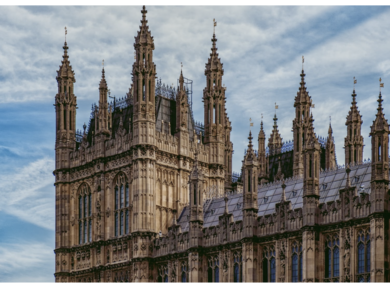Disclaimer: This blog solely reflects the opinion of the authors and should not be taken to represent the general views of IPPR’s management/ editorial team or those of fellow authors.
The Covid-19 pandemic has changed everyday life. Social distancing, frequent hand washing, sanitising, wearing a mask, working and studying from home, alongside avoiding non-essential travel have become the norm since early 2020. The disease continues to send people to the hospital and is claiming the lives of millions. Yet, with the miracle of vaccines, rapid testing, therapeutics, and antivirals, Covid-19 becomes somewhat more mitigatable. Vaccines reduce the risk of severe and fatal Covid-19 infection despite the emergence of variants whilst therapeutics and antivirals help reduce time spent in hospital. As more countries vaccinate their population, it has become reasonable to tolerate a large number of cases whilst keeping hospitalisations and deaths low.
Nonetheless, there are a few places in the world that have Zero-Covid policies: Mainland China, Hong Kong, and Taiwan. However, recently Taiwan drafted plans to move away from Zero-Covid, whilst China continues its pursuit. Singapore admitted that continuing with the Zero-Covid policy of 14 to 21 days quarantine for international travellers and the Covid-infected was no longer sustainable, even if they had experience dealing with Severe Acute Respiratory Syndrome (SARS). Singapore’s path was initially similar to Hong Kong and China for which experience tackling SARS has often been linked to stricter Covid-19 responses and stronger public compliance. So why is it important for China to keep daily Covid-19 cases to zero?
Origins of Covid-19 and China’s domestic response
Mainland China was the first place that detected Covid-19 in late 2019 following clusters of mysterious viral pneumonia outbreaks in Wuhan. The tell-tales were similar to the 2003 SARS outbreak – of both SARS and Covid-19 being caused by a Coronavirus – and China locked down Wuhan and Hubei Province until April 2020. Arguments over the origins of the virus are contestable and contentious. Even though it was dangerous, the lockdown effectively contained the outbreak in Wuhan. By the time China lifted the Wuhan lockdown, Covid-19 had been declared a pandemic, spreading rampantly, and had put most of the world in lockdown. China’s initial response to Covid-19 has been a continuing subject of criticism over the laggard and not-transparent approach to the virus. These include allegations of cover-ups and censorship of whistleblowers.
Lockdown in the United Kingdom (picture 1 source: Sky News) and France (picture 2 source: Le Bien Public) as the virus rampantly spread around the world.
China managed to keep the virus away from entering its borders and immediately controlled local outbreaks. Their Zero-Covid strategy had a significant role to play – contact tracing apps, active case finding, local outbreak protocols including population mass-testing and snap lockdowns, institutionalised quarantine, alongside hard border control measures kept the virus at bay.
China sacked some local health officials as part of the Covid-19 response whenever there was a major local outbreak. China has continued enforcing these policies even during the emergence of fast-spreading variants Delta and Omicron. In contrast, once Zero-Covid countries- Australia, New Zealand and Singapore, have started to move on to living with Covid-19 as these variants granted lower hospitalisation rates due to high levels of vaccination. These countries now focus on hospitalisation and fatality metrics instead of cases. Families in China and the Chinese state media have become critical of places like Australia, deeming them “unable to control Covid-19”.
Chinese image at home and abroad
China became increasingly assertive in criticising the outside world’s response to Covid, ranging from statements from its state-owned media outlets to blaming imported packages for local Covid transmission. This could be a response after the geopolitical tensions with the Trump-era United States, particularly since Trump’s petty, racist sentiment directed the world against China and made people deflect his failed response to Covid-19. Anti-China sentiment reached record high levels since the start of the pandemic.
China fought back by promoting the success of its Covid-19 responses such as Chinese resilience against new Covid-19 variants, “human rights issues” in the West following rising anti-Chinese hate crimes, and comparing Western “survival of the fittest” strategy against to China’s more “superior” Zero-Covid strategy. Global Times is a Chinese state-sponsored media outlet which propagates very strong pro-Chinese Government views.
Picture 3 (source: Thumbor): Protests against anti-Chinese and anti-Asian racism in the United States
China’s commitment to Zero-Covid and criticism of Western responses through its state propaganda is Chinese soft power. Chinese soft power has focused on responses against ideological threats from the West and promoting their domestic state-building project. This means China is growing the attractiveness of its quick emergence from Covid-19 despite stern criticism and anti-China blame game after the initial outbreak.
Zero-Covid was additionally a tool to maintain regime stability and a positive opinion of the Xi Jinping regime. Effects of such a response included control over a Covid outbreak and economic resilience despite challenges. Positive public opinion helped China’s Zero-Covid policy succeed despite accusations of mismanagement during the initial Wuhan outbreak. There was also a link between Chinese authoritarian governance and its commitment to Zero-Covid. China has grown its ability to control and surveil its population combined with tools to control Covid-19. Zero-Covid is a response to criticism against Chinese authoritarianism at the early stages of the pandemic to show China’s ruthless authoritarianism.
China has the tools to fight Covid-19 – Zero-Covid, authoritarianism, and Covid vaccines which have been used at home and exported abroad. The latter helps countries move on from Zero-Covid, but why wouldn’t China move on from Zero-Covid?
Questions over Covid-19 vaccination in China
China has vaccinated around one billion people, which is 75% of its population, yet scientists question the ability of China’s main and widely used Covid-19 vaccines – Sinovac and Sinopharm – both based on inactivated technology – to reduce severe and fatal Covid-19. This concern comes following the fatal Delta variant outbreak in Indonesia where these aforementioned vaccines have been mainly used. The Omicron variant further questioned the ability of Sinovac and Sinopharm to produce antibodies. However, it is dangerous to label China’s vaccines failures – as this could increase vaccine hesitancy in parts of the world where Sinovac and Sinopharm, made using inactivated-virus platform, are considerably more affordable and accessible than mRNA-based Pfizer-BioNTech’s. These vaccines are at least keeping people out of the hospital.
If these vaccines are keeping people out of the hospital, then why is China sticking with its Zero-Covid policy? This is primarily because of fears that widespread local community transmission in China will overwhelm health systems in rural areas. Healthcare inequities are evident and persistent between rural and urban China.
Conclusion
Covid-19 has changed everyone’s lives. However, several countries are now resurrecting their pre-Covid lifestyles by opening up international travel and reducing social distancing norms. Nevertheless, China does not want to rush. China was the first country to detect Covid-19 and might be the last country to leave extremely stringent Zero-Covid policies. Some countries that initially followed China’s Zero-Covid path have now abandoned these protocols. China’s Zero-Covid policies are tools to promote China’s image at home and abroad, particularly in the face of increasingly hostile perception of China and Chinese people abroad over the early outbreak of Covid-19. China may have also vaccinated a large segment of its population, yet it does not want to risk overwhelming its rural health systems hence sticking with Zero-Covid. Moreover, its vaccines continue to face questions abroad with the spread of variants.
By Ivan Korompis
Hi, I’m Ivan Korompis and I am an MSc International Public Policy student at UCL’s Department of Political Science. I am interested in international relations issues, particularly about geopolitics, peace and conflict, Western foreign policy, East and Southeast Asia, as well as international political economy.







